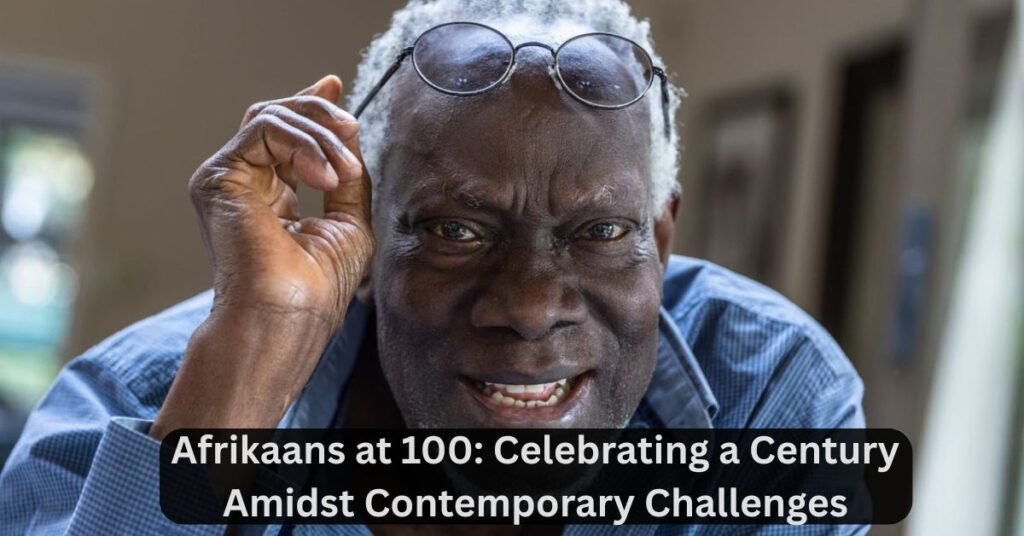Why Afrikaans at 100 Still Matters
“April 23, 2014”, Marked a Historic milestone: The centenary of “Afrikaans” being Officially Recognized as a Medium of Instruction by the “Cape Provincial Council”. This triumph, Largely Championed by “CJ Langenhoven”, Envisioned “Afrikaans” standing proudly beside English as a National Language. “A hundred Years Later”, Afrikaans faces a Dynamic landscape Shaped by Shifting Educational Policies, Evolving Demographics, And cultural Debates. How can Afrikaans Thrive in a Multilingual “South Africa” While honoring its rich past.
A Century of Afrikaans: From recognition to resilience
“Afrikaans'” journey began when Langenhoven Secured its Place in South African Classrooms Up to standard 4, Giving Afrikaners the Right to Learn in Their mother Tongue. “Journalist’ “Gustav Preller” Celebrated this Breakthrough in “De Volkstem”, Noting its Significance for Cultural Pride And Identity.
Fast Forward to Today, “Afrikaans” Remains the Third most Spoken language in “South Africa”, With over 7.4 million speakers — Notably, More than Half are people of colour. Despite this, Afrikaans now faces pressures on Multiple Fronts.
The” BELA” Act: A double-edged sword for Afrikaans schools
The “Basic Education Laws Amendment” (BELA) Act is Reshaping Language Policy in South African Schools. While the Act Seeks to Uplift Historically Marginalized Indigenous Languages And Promote Mother Tongue Instruction Beyond Grade 6, It also Transfers Decision-Making Power over a School’s Language Policy from local Governing bodies to Provincial Governments.
AfriForum, a Prominent Afrikaans advocacy Group, Warns that this could Disproportionately Impact Afrikaans-Medium Schools, Forcing Them to Shift toward English. On The other hand, ANC NEC member Fébé Potgieter-Gqubule Emphasizes that Afrikaans is not Under Threat. She argues that the Act is about Empowering Indigenous African languages, Not Sidelining Afrikaans, Which is Spoken by Diverse Communities Beyond just Afrikaners.
Universities And The Gradual Shift From Afrikaans
South Africa’s Universities Mirror these Language tensions. The University of Pretoria Switched to English As its Primary Teaching Language in 2019 After Afrikaans Home-language Speakers Fell from 85% (1992) to 30% (2015). Similarly, At Stellenbosch University, Some students have Reported Being discouraged From speaking Afrikaans Even in Private, Sparking Debates over Linguistic Rights.
However, Afrikaans Advocates have Achieved Legal Victories. In 2021, The Constitutional Court Ruled in Favor of AfriForum, Ordering the University Of South Africa (Unisa) to Reinstate Afrikaans as a Teaching medium, Affirming the Constitutional Right to Mother Tongue Education Where Reasonably Practicable.

ALSO Read: ANC Youth League Responds to Constitutional Court Ruling on Citizenship Act
Afrikaans in Schools: Cultural Heritage At a Crossroads
In Gauteng, 119 schools — Many in Coloured communities where Afrikaans remains strong — have Transitioned from Afrikaans-Medium or dual-Medium to English-medium. This Shift Raises fears of Cultural erosion, With local Communities expressing Concern Over losing their Linguistic Heritage.
- Yet, the Resilience of Afrikaans cannot be Ignored. It remains Deeply Woven into the Cultural Fabric of South Africa, From the “Western Cape to the Northern Cape’
- , And even in urban centers Like “Johannesburg”, Pretoria,” And Cape Town”.
How can schools and universities balance practicality with constitutional language rights
Experts suggest that a multilingual approach is key: nurturing indigenous African languages while safeguarding Afrikaans’s legacy. Community-driven solutions, thoughtful policymaking, and open dialogue will be essential to navigate these tensions.
Supporting Afrikaans and Linguistic Diversity
- Parents & Educators: Advocate for balanced language policies at local schools.
- Students: Embrace multilingualism — learning multiple languages strengthens cultural understanding.
Policymakers: Develop frameworks that support all official languages equally without diminishing existing linguistic communities.